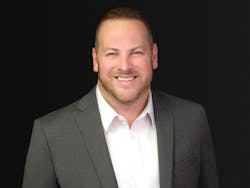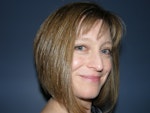Laser Focus World: How did Quantum Corridor get its start?
Ryan Lafler: Quantum Corridor is a public-private partnership formed in 2021 with the state of Indiana, which is enabling advanced Illinois and Indiana tech innovators to exchange data nearly instantaneously and achieve groundbreaking advances. It was funded through a $4 million grant from the state of Indiana’s READI grant program, with the cooperation of the Indiana Department of Transportation and Northwest Indiana Forum.
In October 2023, a successful coherent reconfigurable line system (RLS) flexgrid transmission between the Chicago ORD 10 Data Center and the Digital Crossroads data center in Hammond, Indiana, marked a significant milestone in the network’s development. This transmission achieved connectivity speeds more than 1000x faster than traditional fiber networks—paving the way for future quantum transmissions along the network once applications are integrated.
Quantum Corridor unlocks previously impossible connectivity opportunities for corporate, defense, and instructional platforms through its unprecedented combination of speed, throughput, and low latency.
It’s North America’s first network to achieve a capacity of 40 terabits per second (Tbps), making Quantum Corridor one of the fastest Tier-One networks on the continent. This translates to the ability to transmit 1 million photo files or 1500 hours of high-definition video every second.
The network will possess the capacity to transmit nearly the entire current content load of the internet within a single transmission at 1.2 petabits per second (Pbps). This is the equivalent to transmitting 600 billion pages of text every second.
And it’s already achieved a latency of 0.266 milliseconds of information exchange over its current 12-mile (19.3-km) network—a transmission speed 500x faster than the blink of an eye and far exceeding the average network’s latency, which is 12x longer.
Ciena, a provider of networking systems, services, and software, and C1, an engineering and technology implementation provider, serve as key collaborators in solution design and tech implementation, respectively, in building the entire 263-mile corridor.
Quantum Corridor plans to continue expanding its network and connecting research facilities.
LFW: Why is the Midwest an ideal location for a quantum tech hub?
Lafler: The Midwest is poised to become the quantum center of the U.S. because the region has many world-renowned quantum research institutions in Chicago and Indiana. It also has underutilized Department of Defense and military base assets that will be located along Quantum Corridor’s fiber-optic network once it’s expanded.
Beyond this, the Midwest has access to land, power, and one of the largest bodies of fresh water within North America, which is essential to support quantum infrastructure. The region’s central location on the continent also makes it ideal for defense research.
LFW: What type of fiber-optic cable is involved?
Lafler: It’s a coherent RLS flexgrid transmission, essentially the most modern variation of dense wavelength division multiplexing (DWDM). This is the foundation for quantum transmission because coherent light will be used as a checksum for truth on a quantum network. Quantum key distribution (QKD) is expected to be broadcast over this network in 2024.
LFW: What does Quantum Corridor achieve in terms of quantum supremacy, speed, and security?
Lafler: Quantum Corridor was built from the ground up using components made in North America. It only builds dedicated waves for dedicated customer transmissions so that no other customer data traverses a dedicated customer path at any time.
The total throughput will reach 1.2 Pbps, which is equal to 600 billion pages of text transmitted every second. Today, the collective content load of every user combined globally across the internet is 1.7 Pbps, or the equivalent of sharing 22.6 years of HD video across the internet every second. Once it reaches 1.2 Pbps, Quantum Corridor will be able to throughput the amount of data that Google processes globally each day within 17 seconds.
A coherent wave is essentially a laser wavelength that combines multiple wavelengths that would normally be sent over traditional optical networks into one large wave of light. RLS stands for reconfigurable line system, which means Quantum Corridor can easily program and reprogram the environment for multi-tenant transmission or support multiple wavelengths on one transmission—setting the foundation for quantum transmission.
This passage describes the foundation for quantum transmission, where light waves are used to convey information as a truth checksum. Quantum systems or technology can integrate with this network—and take advantage of the simultaneous transmission capabilities provided by RLS flexgrid. This foundation will eventually enable quantum transmission.
LFW: Any big challenges ahead?
Lafler: Quantum technology is still in its early stages of development and, as we bring it to market, researchers will discover many applications within applications that are difficult to anticipate. But we do know we’re making a significant impact on the science and technology community.
LFW: What types of applications are you testing and using the network for?
Lafler: Quantum computing offers incredible potential for breakthroughs across applications in nearly all industries, including:
- Climate modeling and environmental impact. Quantum computing can enhance our ability to model and simulate complex natural systems, such as climate patterns and environmental processes. This can lead to better predictions and strategies for addressing environmental challenges and mitigating climate change.
- Financial modeling. Quantum computing’s ability to handle large datasets and complex simulations can be beneficial in financial modeling, risk assessment, and portfolio optimization. This can result in more stable financial markets and better investment strategies.
- Artificial intelligence (AI) and machine learning. Quantum computing can accelerate the development of AI and machine learning algorithms. This can lead to more accurate and personalized recommendations for applications like healthcare, entertainment, and online shopping.
- Energy efficiency. Quantum computers have the potential to design more energy-efficient materials and processes—and contribute to reduced energy consumption and a greener future.
- Materials science and innovation. Quantum simulations can help discover new materials with unique properties, such as superconductors and advanced batteries. These innovations can lead to improved electronic devices and energy storage solutions.
- Scientific discovery. Quantum computing can aid scientists in tackling complex scientific questions, such as understanding the behavior of particles at the quantum level, to simulate chemical reactions and explore the fundamental laws of physics.
Quantum computing holds great promise for advancing science, technology, and innovation—with the potential to bring about transformative changes in various aspects of our lives. Like the .com boom, there are applications we can’t even fathom across quantum computing, quantum networking, and quantum commercialization, but we’ve laid the infrastructure for this ingenuity.
LFW: What’s next?
Lafler: Quantum Corridor will expand into Northwest Indiana and West Lafayette, Indiana, to connect research institutions and data centers to begin quantum data transmission.


